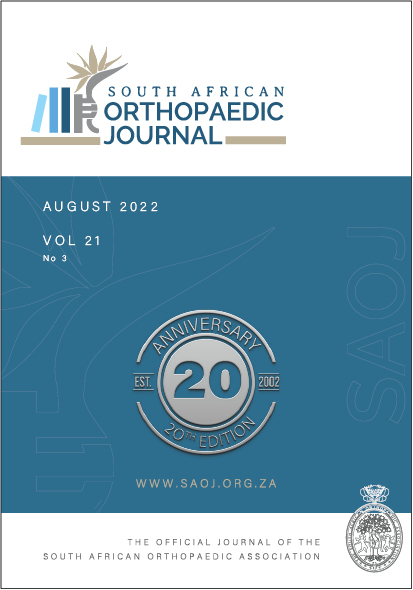Halo-external fixator frame-assisted correction to treat severe kyphotic deformity in children younger than 4 years old
Keywords:
external fixators, kyphosis, spine, child, tuberculosisAbstract
Background: Severe kyphotic deformity in young children may have devastating outcomes when neglected. Halo-pelvic traction has been shown to be very effective as part of the treatment for severe kyphosis, but little is known about application of this technique in very young individuals. The aim of this case series was to provide novel insights into the surgical technique associated with halo-external fixator frame (HEFF) treatment for severe spinal deformity in patients younger than 4 years old, along with the associated radiologic outcomes and complications.
Methods: Clinical and demographic characteristics including the duration in the HEFF, HEFF-associated change in kyphosis angle (KA) and final KA following definitive surgery were extracted from medical records.
Results: Five female patients with a mean age of 36 months (range 30–44) were included. Three patients had thoracic spinal tuberculosis (mean KA 82°), one had lumbar spinal tuberculosis (KA 42°) and one had iatrogenic post-laminectomy cervical kyphosis (type 1 neurofibromatosis)(KA 112°). The HEFF was applied for a mean of six weeks and resulted in a mean thoracic deformity correction of 29° (38%), a lumbar correction of 23° (55%) and cervical correction of 47° (42%). Definitive surgery resulted in a further mean overall deformity correction of 28, and patients had a satisfactory KA angle (23° lordosis to 31° kyphosis) at the last follow-up. HEFF-associated complications included pin-site infection, pneumonia and frame dislodgement.
Conclusion: HEFF appears to be an effective method for correcting severe kyphotic spinal deformity in very young patients where other options are limited. It allows for independent mobilisation and can provide for spinal stabilisation while awaiting bony healing after definitive surgery. However, healthcare providers should be aware of the potential dangers of HEFF hardware, such as difficulty in establishing an airway due to the fixed position of the neck.
Level of evidence: Level 4

